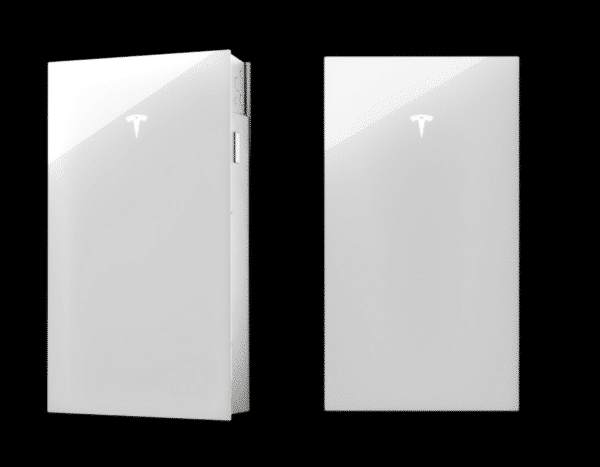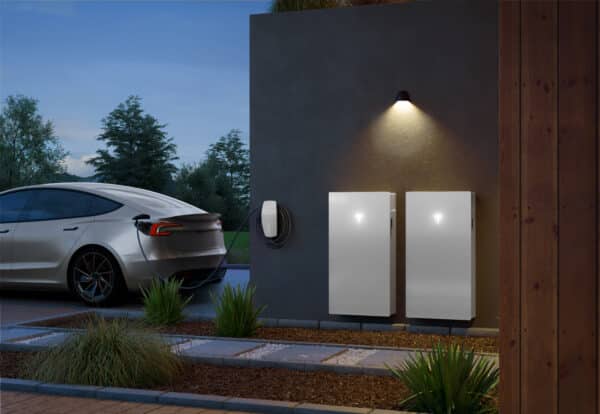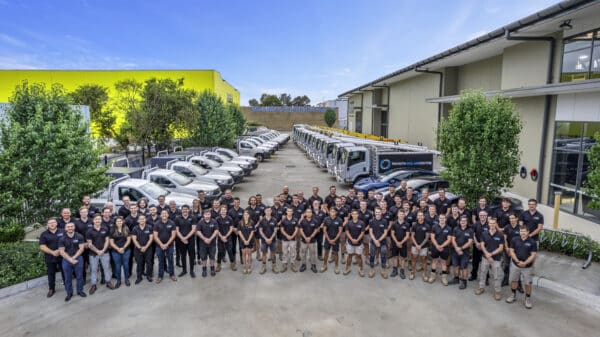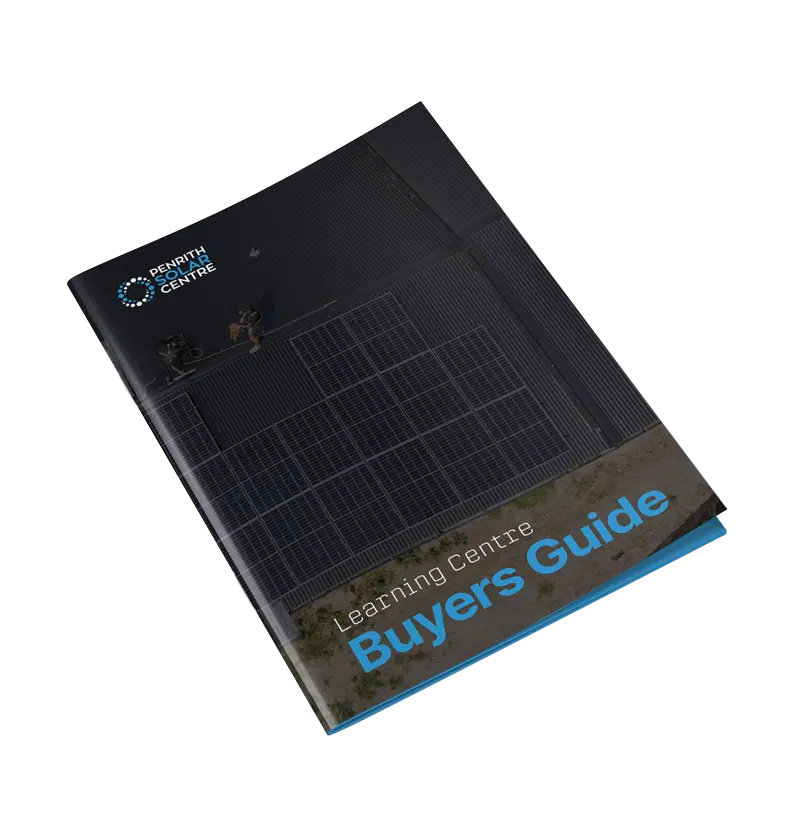
Tesla has released the Powerwall 3 in Australia. The wait is over. But what exactly are the differences between Powerwall 2 and Powerwall 3?
At Penrith Solar Centre, we’ve been installing Powerwall 2 for as long as it’s been available. We know a thing or two about it. And now we’re installing Powerwall 3, maintaining our expertise in the Western Sydney marketplace.
In this article, you will learn:
- Power, Energy, and Efficiency
- Installation and Design Differences
- Performance and Durability
- Cost and Value
By the end of this article, you’ll understand the differences between these two models and whether you’ll investigate the Powerwall 3 further.
Powerwall 2 vs. Powerwall 3: Power, Energy, and Efficiency
The most obvious place to start is by looking at the technical specifications of both the Powerwall 2 and the Powerwall 3.

Energy Capacity and Storage
When it comes to energy capacity, the Powerwall 3 has not been upgraded. In terms of power capacity, the Powerwall 3 smokes its predecessor.
Powerwall 2: The storage capacity of Powerwall 2 is 13.5kWh. It has a continuous power output of 5kW and a peak output of 7kW. These figures have made the Powerwall 2 a reliable option for many solar systems.
Powerwall 3: The storage capacity is the same; 13.5kWh. The upgrade is based on how much power the Powerwall 3 can output. It can deliver up to 10kW of continuous power. Technically, it can produce 11.04kW, but with local DNSP regulations, the inverter needs to be capped at 10kW. This will prevent Powerwalls from disrupting the grid in the middle of the day when the solar is pumping.
A continuous power output of 10kW means that Powerwall 3 can support more energy-intensive appliances simultaneously. This is particularly beneficial for homes equipped with loads that demand more electricity, such as electric vehicles and high-power appliances like air conditioning, electric stoves, and dryers.
Battery and Inverter Combination
Powerwall 3 has a hybrid inverter enclosed in the casing of the battery. It’s two components within one package. Up until now, they were separate.
Hybrid inverters exist to help batteries store energy. In a solar system with a hybrid inverter and battery, the DC power from the solar goes directly through the hybrid inverter into the battery without any conversion.
When the home is ready for energy from the battery, the hybrid inverter converts the DC power into AC power.
Direct Input from Solar: The Powerwall 3 is a DC-coupled battery with input directly from the solar. There is no need to convert that power from AC to DC. It just goes from the panels harvesting DC power to the battery that’s storing DC energy.

Efficiency
Efficiency is an important factor when considering a solar battery.
Every time a solar battery charges or discharges, some energy is lost. A higher efficiency means less energy is lost during storage and conversion.
This is called round-trip efficiency. It is calculated by comparing the amount of energy you get out of the battery to the amount you put in. For example, if you put 10kWh into the battery and can later use 9kWh of that energy, the round-trip efficiency would be 90%.
So, a higher round-trip efficiency means that less energy is lost in the process of storing and retrieving power, making the battery more efficient.
Here’s how the power to energy conversion works:
- Energy In: Your solar panels produce DC power and your home (all the lighting and appliances) runs on AC power. This is just the nature of this technology. The DC power (from the panels) is converted to AC power (for the home) in an inverter or microinverter depending on the type of solar system you have.
- Inverter Conversion: When AC power goes into an AC-coupled battery, the AC power needs to be converted to DC energy for storage. Some of that energy is lost as heat when converting AC power to DC energy for battery storage. In a DC-coupled battery like Powerwall 3, the DC from the solar goes directly into the battery without needing to change.
- Energy Out: When you use energy stored in your battery (like powering your home in the evening), there are also losses as the energy is converted from the battery’s storage (DC) and back into electricity that can be used by your home (AC power).
So the journey of electricity in an AC-coupled system is: DC (panels) to AC (main switchboard; home, grid, or battery) to DC (battery) to AC (home).
And in a system with DC-coupling, the journey is: DC (panels) stays DC (hybrid inverter) stays DC (battery) to AC (main switchboard; home or grid).
Powerwall 2: Powerwall 2 has a round-trip efficiency of about 90%.
The efficiency figures provided by Tesla are:
- Solar to Battery to Home/Grid Efficiency (Round-trip efficiency): 89%
- Solar to Home/Grid Efficiency: 97.5%
These figures are in alignment with other batteries and inverters in its class.

Three MPPTs (Maximum Power Point Trackers):
One of the latest features of the Powerwall 3 includes three MPPTs (Maximum Power Point Trackers) monitoring three arrays of solar panels. These components help in optimising the power harvested from your solar panels. Powerwall 2 does not have this feature. In fact, it does not have solar input at all. It’s AC-coupled only.
Solar panels produce varying amounts of power depending on sunlight, temperature, and shading. The MPPTs make real-time adjustments to ensure that each array of solar panels is always operating at the best possible level it can achieve.
With the three high-current MPPTs in Powerwall 3, each leg of your solar array can operate independently. This means that if one section of your roof is shaded or receives less sunlight, it won’t drag down the performance of the other two arrays. This ability to manage three arrays of solar panels independently of each other often leads to more energy being harvested than one alone.
It’s still important to note that while there are three arrays operating independently of each other, their efficiency is limited without panel-level optimisation. You’ll get that with microinverters; each panel working independently to maximise solar production.
Powerwall 3 still has the limitations of any central inverter system. A central inverter system works like Christmas lights: when one goes out, it affects the performance of the rest. Even with three arrays working at the same time, each array is limited by the performance of its weakest link in the chain.
Microinverters, which are mounted underneath each panel, can create greater efficiencies because they operate independently from each other. They paired perfectly with Powerwall 2, an AC-coupled battery.
If you’re interested in learning about types of solar batteries, you might want to check out the following article titled, AC-coupled Battery vs. DC-coupled Solar Batteries.

Powerwall 2 vs. Powerwall 3: Installation and Design Differences
One of the biggest improvements with Powerwall 3 is its installation process. Powerwall 2, while advanced for its time, has none of the installation features of the new battery.
Installation Design
Powerwall Dolly: Tesla introduced the Powerwall Dolly with Powerwall 3. It’s a dolly designed to make moving and mounting the Powerwall 3 easy.
The dolly has disc brakes for smooth manoeuvring, special handles for a better grip, and a locking plate that makes sure that it’s installed precisely. Additionally, the dolly can gently raise and lower the Powerwall 3, allowing a single person to perform the installation. This dolly is particularly valuable for installers working in tight spaces or in challenging homes.
Ease of Installation: For installers, Powerwall 3 is a game-changer. The number of parts that need to be installed has dropped, which reduces the installation complexity. Powerwall 3’s all-in-one design houses all critical components within a single, sleek unit.
In other solar designs with Powerwall 2, the battery, inverter, and other necessary components are often separate units. This setup requires more wiring, additional space, and increased installation time.
However, it’s important to note that having all the components in one unit also translates into a single point of failure: the hybrid inverter. While you’re potentially saving money on installation time, you might experience your whole system going down if that component needs to be repaired or replaced.

Scalability
Stacked Capacity: When fully expanded, a system with four Powerwall 3 units provides up to 54kWh of storage. In the first quarter of 2025, Tesla plans to release models of Powerwall 3 without hybrid inverters inside them. These battery-only devices are plug-and-play, so adding them on is easy. You can stack up to 16 batteries without inverters for a storage capacity of 216kWh.
Expandable System: As more households adopt electric vehicles (EVs) or add more solar panels, their energy consumption will grow significantly. Powerwall 3’s expandable design will meet these increasing demands without the need to overhaul the entire system.
For example, a household with several high-power appliances like electric ovens, HVAC systems, or multiple EV chargers would benefit from the increased capacity that comes with multiple Powerwall 3 units.
If you’re interested in learning a bit more about the upcoming solar battery rebate, you might want to check out the following article titled, Everything You Need to Know About the Home Battery Rebate for NSW.
Powerwall 2 vs. Powerwall 3: Performance and Durability
Increased Power Output
Powerwall 3 (when capped to DNSP inverter specifications) delivers up to 10kW of continuous power, which is double the output of Powerwall 2. This is a significant upgrade.
With Powerwall 2, the 5kW continuous power output was usually sufficient for household needs like running lights and some electronics.
The Powerwall 3 can handle heavier loads than its predecessor with almost double the power output. More than enough to kickstart and run heavy loads like air conditioning or EV charging.
Monitoring and Management
At Penrith Solar Centre, we love energy monitoring and management software. The Tesla App is one of the best experiences we’ve had with energy-use software. There are three features we’d like to highlight here.

Storm Watch:
This This feature automatically charges the battery to full capacity when severe weather is forecast. Of course, the idea behind this is for you to have as much energy stored as possible before a power outage.
Charge On Solar: This feature diverts excess solar power to your EV, so it doesn’t have to charge from the grid or your Powerwall. If you have an EV and you have solar, this is a game-changer. We’ve written about it a bit. If you’d like to check out our article about it, you might want to click on the following link titled, Guide to Tesla Charge on Solar in Australia – 2024.
And, of course, it’s very easy to program your Tesla App to charge and discharge your Powerwall 3 when energy is most or least expensive. By using stored energy when prices are high, you save money. If you export stored energy to the grid when there’s demand, your retailer pays you for it. You keep track of this in the app.
Durability in Extreme Climates
Powerwall 3 is designed to perform in harsh weather conditions or diverse seasons. The operating temperature range is -20°C to 50°C. This is the same as Powerwall 2.
Powerwall 3 has an aluminium shell that acts as a heat sink, helping to keep the battery cool in hot climates, and an active cooling system to maintain optimal performance. However, this cooling system is not liquid-cooled like the Powerwall 2. The internal fans make some noise when the system needs to cool off.
Heat Mode: On cold days or in cold climates, Powerwall 3 offers this feature. When a battery is cold, it’s less efficient. This mode pre-warms the battery cells when temperatures drop for more efficient charging. They got the idea for this feature from their EVs, which warm up the battery as you approach a Supercharger station in chilly weather.
If you’re interested in learning a bit more about how to set up and use the Tesla App, you might want to check out the following article titled, How to Set Up and Use the Tesla Powerwall App.
Click here for solar solutions.
Powerwall 2 vs. Powerwall 3: Cost
Now, let’s talk about cost. Powerwall 2 has been a popular choice because it offers great value for money. It’s reliable, efficient, and has a proven track record. And at $12,100 including the Gateway (excluding installation), it was an affordable option for many.
Price Comparison
Powerwall 3 is priced competitively with other batteries in its class. However, it’s $1,500 more than Powerwall 2.
In Australia, Powerwall 3 retails for $13,600. This price includes the Gateway but does not cover installation costs.
If you’re interested in learning a bit more about solar batteries, you might want to start with the following article titled, Adding a Battery to a Solar System.
This Is Heavy: The Weight for Powerwall 3 Is Over!
Powerwall 3 builds on the solid foundation of Powerwall 2, offering better performance, easier installation, and value over time.
At Penrith Solar Centre, we’re committed to innovation in the renewable energy space. It’s what we do. Tesla has introduced a product that meets the needs of today and the future. Whether you’re looking to upgrade or install a new system, Powerwall 3 offers a powerful, reliable, and cost-effective solution for your home energy needs.

If you’d like to learn more about Tesla products, we recommend you check out the following article titled, Tesla Powerwall 3 Review: An In-Depth Look at Tesla’s New Solar Battery.










